i-Docs is the subject area I’m interested in, interactive documentaries.
There are a variety of terms in circulation i-Docs, Web Docs, Dynamic Documentaries, Immersive Storytelling and so on, but i-Docs, it seems, has come through as the strongest of these and so it’s the expression I’m going to go with.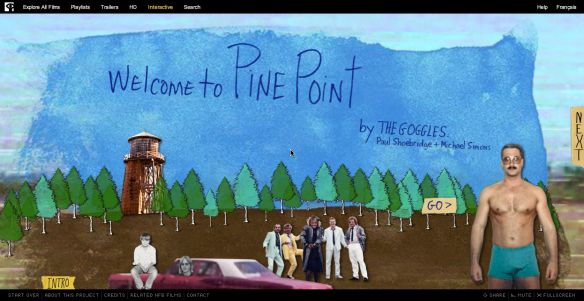 I’d like to jump right in and talk about the best i-Doc I’ve seen so far which is Welcome to Pine Point (http://nfb.ca/pinepoint). The link here takes you to the Pine Point website while the YouTube video (below) is a trailer for the website (which is to say, a promotional video or advert).
I’d like to jump right in and talk about the best i-Doc I’ve seen so far which is Welcome to Pine Point (http://nfb.ca/pinepoint). The link here takes you to the Pine Point website while the YouTube video (below) is a trailer for the website (which is to say, a promotional video or advert).
Welcome to Pine Point is a website about a town which no longer exists but which once existed in the far north western territory of Canada. It was a mining town — open cast zinc mining — the town was built to house the workers, so schools, ballpark, ice-rink, town hall or meeting centre, the usual crew in 20th century Anglo-American culture.
 Pine Point boomed in the boom times and died in the down times. The mine closed at the end of the 1980s and the town died out shortly thereafter. Totally — there’s nothing there at all now, not a building nor a lamppost standing to memorialise what was once home for thousands of people (for a cluster of generations).
Pine Point boomed in the boom times and died in the down times. The mine closed at the end of the 1980s and the town died out shortly thereafter. Totally — there’s nothing there at all now, not a building nor a lamppost standing to memorialise what was once home for thousands of people (for a cluster of generations).
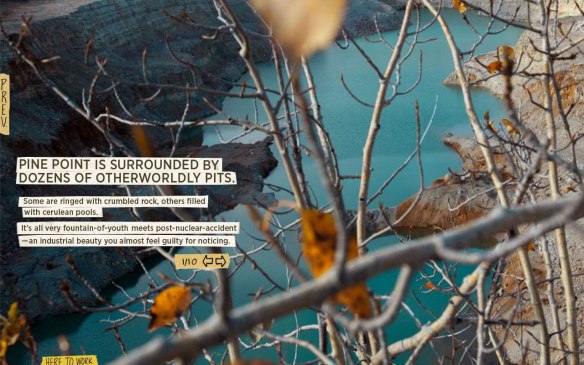 The Welcome to Pine Point website was created by Mike Simons and Paul Shoebridge, collectively known as The Goggles, a Canadian duo. (Welcome to Pine Point is hosted by the Canadian Film Board and was launched at the Toronto Film Festival in 2012.)
The Welcome to Pine Point website was created by Mike Simons and Paul Shoebridge, collectively known as The Goggles, a Canadian duo. (Welcome to Pine Point is hosted by the Canadian Film Board and was launched at the Toronto Film Festival in 2012.)
The website consists of photographs, sound and video clips, interviews, music, and narration by Simons. The music (and the soundscape in general) deserves special mention because it is just so bang on, the tracks are so well related to one another and yet distinct, and so appropriate: a group called The Besnard Lakes wrote and performed the main audio tracks. The whole thing is ambient — pleasantly stonedstroketrippy ambient — interleaved with the sounds of mining machinery, kids playing baseball, a Mothers’ Union coffee morning, 1970s TV chat show chatter and the like. Not unlike, say, the KLF’s classic (1990) album Chill Out.
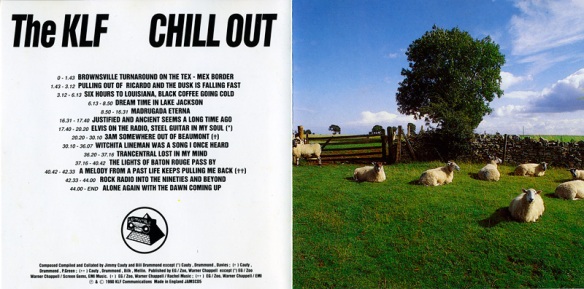 That mix of media (sound, stills, video, music, and even data), and the fact that the whole thing is web-based, these are some of the key characteristics of an i-Doc. But what’s really important, of course, is the interactivity part of it.
That mix of media (sound, stills, video, music, and even data), and the fact that the whole thing is web-based, these are some of the key characteristics of an i-Doc. But what’s really important, of course, is the interactivity part of it.
On each page you can hold for as long as you please and you can also delve further into each of the pages (most of them anyway), flicking through picture galleries, for example, or playing video or audio clips.
And, of course, you can ‘click’ back and recheck or reread or review something if you need to (or simply would like to do so).
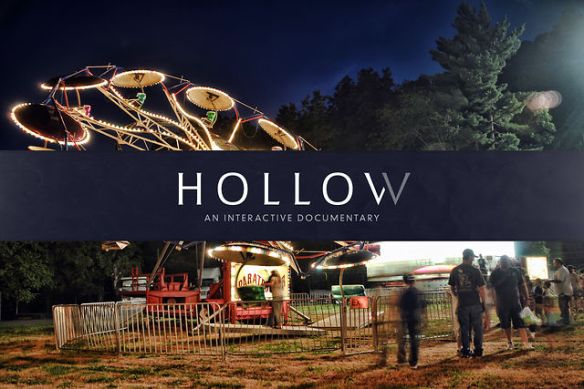 Some i-Docs feature explorations of what can be done with a cursor, Hollow (http://hollowdocumentary.com), for example, by Elaine Macmillion (2013), is one such. As you scroll, the documentary runs; it’s as if you had your finger in the spindle of a film projector.
Some i-Docs feature explorations of what can be done with a cursor, Hollow (http://hollowdocumentary.com), for example, by Elaine Macmillion (2013), is one such. As you scroll, the documentary runs; it’s as if you had your finger in the spindle of a film projector.
And, again, the audio work in Hollow is exquisite. Hollow is about a county in West Virginia, McDowall County, a coal mining territory which is bleeding out; the population is declining by about 10,000 every decade. In the 1940s and 50s there were over a 100,000 people living in McDowall County, presently there are about 20,000 and the total is still in freefall.
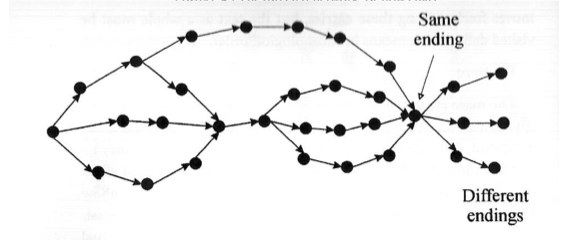 But also, to some extent, one can choose the line one takes through the material. Basically, i-Docs are about presenting a database. So, you have, say, 250 video clips — in fact, let’s talk about small narrative units (SNUs) because they may not necessarily be video clips, some of your 250 items might be little galleries of photos with audio files attached, or it could be a series of pages, or a series of slides (as in a Prezi presentation) and so on. So you have your opening unit, your general intro (preceded, very probably, by a landing page), but from there different viewers may take different routes through the material.
But also, to some extent, one can choose the line one takes through the material. Basically, i-Docs are about presenting a database. So, you have, say, 250 video clips — in fact, let’s talk about small narrative units (SNUs) because they may not necessarily be video clips, some of your 250 items might be little galleries of photos with audio files attached, or it could be a series of pages, or a series of slides (as in a Prezi presentation) and so on. So you have your opening unit, your general intro (preceded, very probably, by a landing page), but from there different viewers may take different routes through the material.
So, for example, I could make an i-Doc about living in Skibbereen and someone could watch it who is only interested in material relating to women, or to Protestants, or business people, or immigrants, or sports people or older people or whatever.
At the present time most of the interactivity and most of the choice tends to be theoretical more than actual — which is to say, as yet, generally speaking, the choices are rather limited.
But the point is, the potential is enormous. This stuff is really only in its infancy, but very soon you’ll see i-Docs which will be made up of 600, 800, 1,200 SNUs, and you and I could watch a film about life in Amsterdam, for example, or bell-ringing in Ireland, or the music scene in Istanbul, and see quite different material.
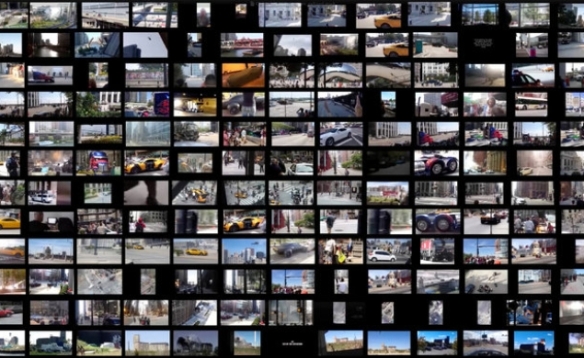 And that is another aspect of the i-Doc — that it is open-ended, you can go on adding material or editing it endlessly.
And that is another aspect of the i-Doc — that it is open-ended, you can go on adding material or editing it endlessly.
But, as I say, it’s the potential they represent which has everybody buzzing (almost every film festival has an i-Doc section nowadays; and, indeed, we are beginning to see the emergence of festivals specifically concerned with i-Docs — Sheffield in the UK, for example, also Amsterdam).
And that’s what I want to do: I want to chart the development of this new form of story-telling — examining the early development of the syntax and grammar of i-Docs, comparing and contrasting this emerging form with the early years of older forms of off-the-page story-telling and presentation, particularly viz television, radio, and cinema.
If you want to explore i-Docs for yourself there are now a number of sites which specialise in curating them, which is to say, listing them, linking to them, and rating them,§ and providing descriptions of them (including, of course, the technical and operational aspects of each [because who knows what operating requirements a particular i-Doc might need]) —
http://collabdocs.wordpress.com/
http://www.wiredmov.com/manifesto/
See also the Korsakow website: http://korsakow.org/ and http://i-docs.org/
§ On i-Doc ratings, the MIT people, for example, have a five-point scoring rubric they call VINSE, an acronym for visual design, interactivity, narrative, sound, and engagement.
Perry O’Donovan, 20 November 2014
